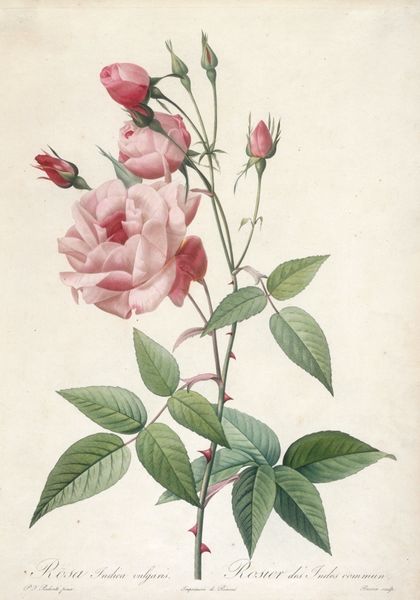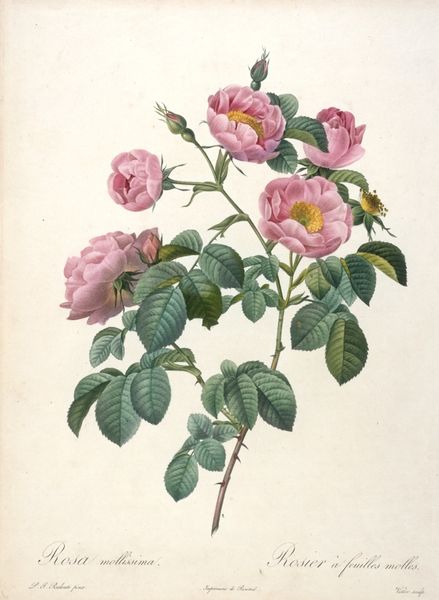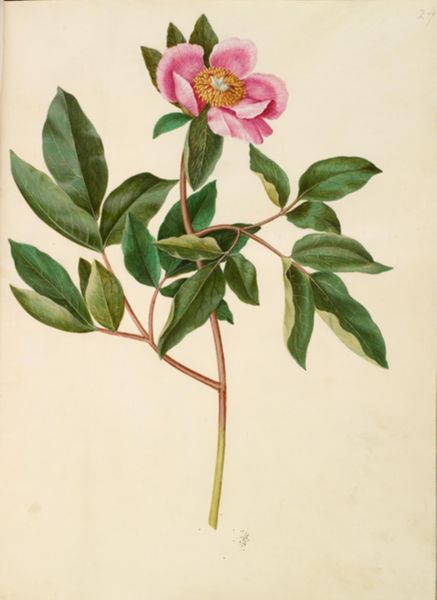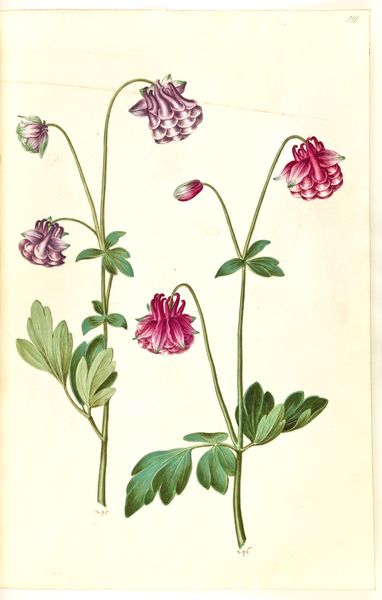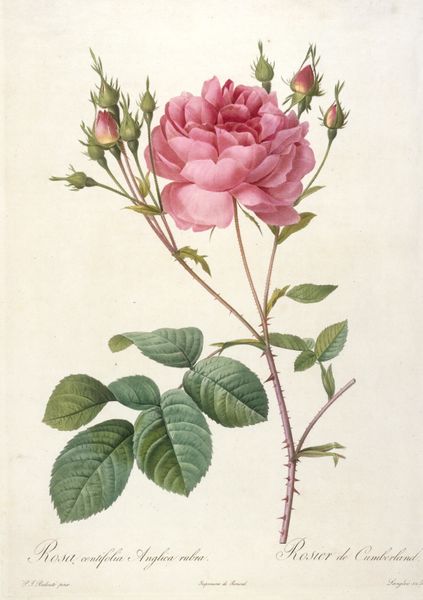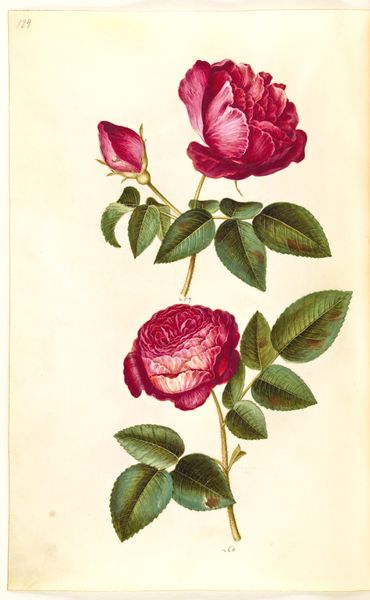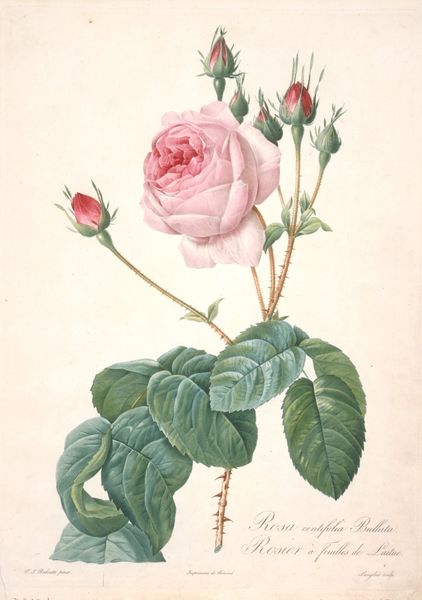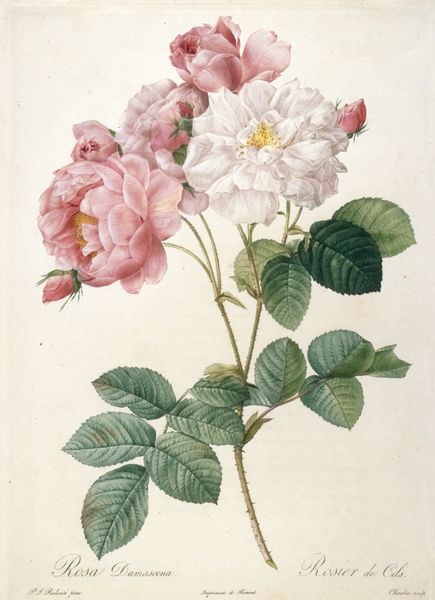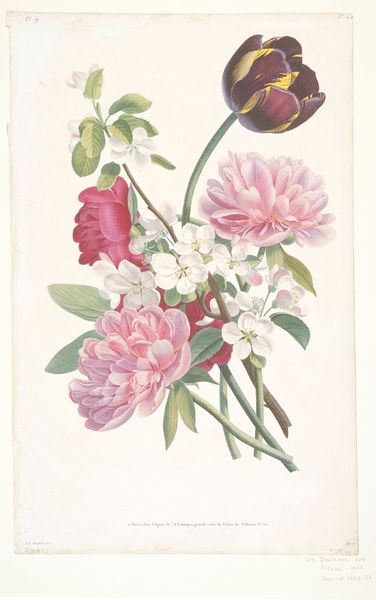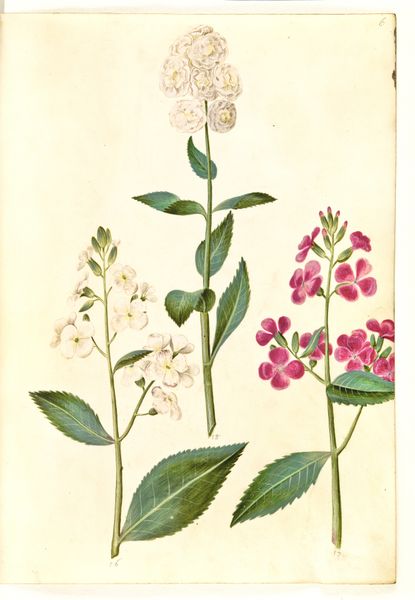
drawing, tempera, print
#
drawing
#
tempera
# print
#
botanical illustration
#
green background
#
botanical drawing
#
academic-art
#
botanical art
Dimensions: 10 3/4 x 8 1/2 in. (27.31 x 21.59 cm) (plate)
Copyright: Public Domain
Curator: Take a look at this lovely botanical illustration, "Lathyrus latifolius (Everlasting Pea)," created in 1827. Editor: It's delicate, isn't it? A certain sweetness radiates from the composition with the soft, rosy petals and verdant leaves. It feels…serene. Curator: Indeed. The unknown artist meticulously captured every detail. The medium includes drawing, tempera, and print. Think of the labor and skill involved. Editor: Speaking of detail, look closely at the curvature of each petal, the almost tangible texture achieved through subtle shading. The artist uses line and colour masterfully to depict the structure of this delicate subject. How interesting that this careful attention makes the drawing also seem quite fragile and transient. Curator: It does. Given the prevalence of botanical illustrations at the time, commissioned by wealthy landowners to document their collections, I wonder about the societal context surrounding this particular piece. Was it intended for scientific study, decorative purposes, or perhaps both? The availability of resources necessary for such prints hints at patronage and access, really raising the question of consumption of botanical beauty at that time. Editor: Certainly. However, stripping away its social implications for a moment, what remains is an image of compelling simplicity and balance. Note how the composition leads the eye upwards from the broad leaves to the delicate buds. It is such a pleasing arrangement, guiding our attention to different forms and planes. Curator: You can really appreciate the elegance inherent in the materials as well: the paper itself, the inks and pigments chosen for their subtlety. It also reflects, for me, the increasing commodification of nature as knowledge, packaged for elite consumption. Editor: Ultimately, both avenues lead to appreciating the layers within this piece. Thank you for pointing out these critical factors related to production. Curator: And thank you for lending your keen eye toward the beautiful structure. Editor: Absolutely! This discussion really brought this artwork into new light for me.
Comments
minneapolisinstituteofart almost 2 years ago
⋮
Botanical illustrators working in the fifteenth and sixteenth centuries devoted themselves to the medicinal qualities of plants and sought to render plant structure and function as precisely as they could. Later, European explorers brought specimens back from exotic locales, and artists carefully reproduced them for an audience fascinated by new discoveries. By the eighteenth and nineteenth centuries, artists had shifted their emphasis from scientific illustration to the innate beauty of the plant or flower. The Minneapolis Institute of Arts is fortunate to possess an impressive collection of more than 2,000 botanical prints and drawings.
Join the conversation
Join millions of artists and users on Artera today and experience the ultimate creative platform.
